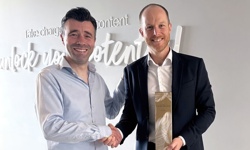
Nearly all luxury is physical. If it is not the warm embrace, the hot bath, the handling of a branded bottle of scent, the smell of cigar smoke, it is a branded experience whether its Loro Piana, Penguin, Chanel or Vogue. These branded arbiters and exponents of style and taste will continue to secure higher than average margin for decades.
Digital can be employed to discover and sell print. The most satisfactory digital experience is in search whereas in print, it is the serendipity in the flick through, the storytelling and focused engagement. This is why advertisements online are so annoying; they interrupt your journey, whereas in print, the ads provide relevant information and entertainment. The impact of received information from a printed product is processed more easily and has more impact and therefore recall. If you read an emagazine rather than print, it is bad for your health at bedtime. Really. A Harvard Medical School study found that reading a light-emitting emagazine before bed interferes with your ability to sleep and with your attention the morning after.
With all 305k UK retailers closed during the pandemic, content producers addressed this unique opportunity by developing new ways to serve their advertisers and customers. Those who were fleet of foot demonstrated extraordinary results; eg The Economist profits jumped 27% on subscriber growth.
After 18 months of nothingness, there is huge pent up consumer demand for luxury and it is therefore odd that publishers are not pushing their wares in more directions and gathering information from more non industry events. Selling in environments in which the product is relevant as well as in the improving conventional CTN channel will bring brands front of mind.
Print has already embraced so many extensions in its physical nature – inks that react to touch, deliver smell and sound, and deliver interactive experiences. Publishers, now closer to their readers than ever, can deliver ready-made brand extensions extending the virtuous commercial circle. So, delicious magazine is now offering to personalise a package of recipes for £21.99 in paperback or £24.99 in hardcover.
During the pandemic, many print products saw the same kind of growth global luxury sales enjoyed. Already luxury retailers use books and magazines to make their stores cosy. Print distribution channels are morphing to new market conditions and will continue providing new retail opportunities for publishers.
As we watch in wonder the achievements of Amazon, particularly in setting the bar for customer service, the real challengers to print and their product will come not from each other but from inventions in Silicon Valley once they get to grips with the advantages of a non-digital product.
The most satisfactory digital experience is in search whereas in print, it is the serendipity in the flick through, the storytelling and focused engagement.
About MediaFund
We are the agents that get the deals done. We work to agreed conclusions and prepare clients in telling their story to the greatest advantage. This involves analysing the market, writing the information memorandum, scripting strategic reviews and working to preparing presentations to carefully selected qualified prospects and in the process co-ordinating the clients’ lawyers and accountants.
Tel: +44 (0)7768 992 374
Email: prc@mediafund.co.uk
Website: www.mediafund.co.uk
This article is part of our ‘Print Post-Pandemic’ special feature, looking at the future of print as we emerge from lockdown. The feature includes the following articles by leading publishers and suppliers:
A major part of the mix, by Mark Allen
Rewards extended dwell time, by Sally Hampton
Shout it loud: print is safe!, by Chris Horn
Targeted distribution is key, by Stephanie Hyde
New metrics needed, by Keiron Jefferies
Sustainability: consumers demanding more, by Sarah Lesting
We need to change the way we operate, by Nicola Murphy
Reasons for (justifiable) optimism, by Tim Robinson
Luxury is physical, by Piers Russell-Cobb
Positive outlook, by Adam Sherman
Subtle changes bring cost savings, by Julian Townsend
Turning ‘expensive’ into ‘premium’, by Neil Wass
This article was first published in InPublishing magazine. If you would like to be added to the free mailing list, please register here.










